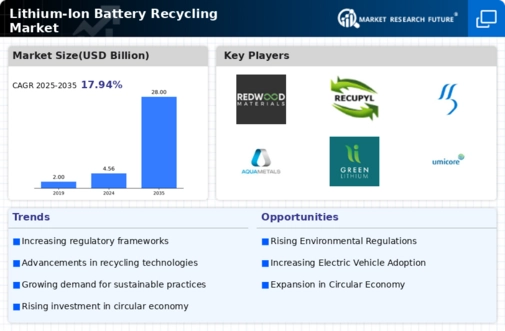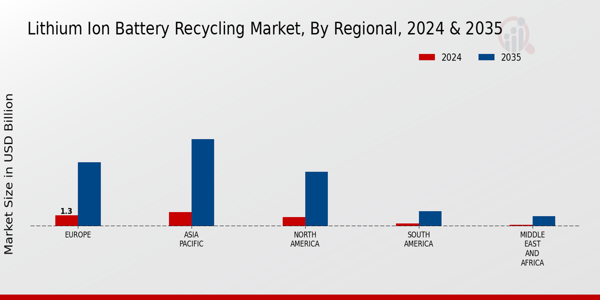Li-ion battery recycling Market Summary
As per Market Research Future Analysis, the Lithium Ion Battery Recycling Market was valued at 9.21 USD Billion in 2024 and is projected to grow to 71.39 USD Billion by 2035, reflecting a CAGR of 20.46% from 2025 to 2035. The market is driven by increasing demand for electric vehicles, stringent environmental regulations, and advancements in recycling technologies. The focus on sustainability and circular economy initiatives is propelling investments in recycling infrastructure and technology, making battery recycling critical for resource recovery and environmental protection.
Key Market Trends & Highlights
The Lithium Ion Battery Recycling Market is witnessing significant growth due to various factors.
- Electric vehicle sales surged to around 6.6 million units in 2021, a 108% increase over the previous year.
- The European Union aims for all batteries placed on the market to be recyclable by 2030.
- Hydrometallurgical methods can recover over 90% of lithium and 95% of cobalt from spent batteries.
- The Consumer Electronics application held a market share valued at 0.984 USD Billion in 2024.
Market Size & Forecast
| 2024 Market Size | USD 9.21 Billion |
| 2035 Market Size | USD 71.39 Billion |
| CAGR (2025-2035) | 20.46% |
Major Players
Key Companies include Redwood Materials, Krebs and Riedel, Neometals, American Battery Technology Company, Sims Limited, Duesenfeld, Fortum, Glencore, Ascend Elements, Aqua Metals, Umicore, and TOMRA.





















